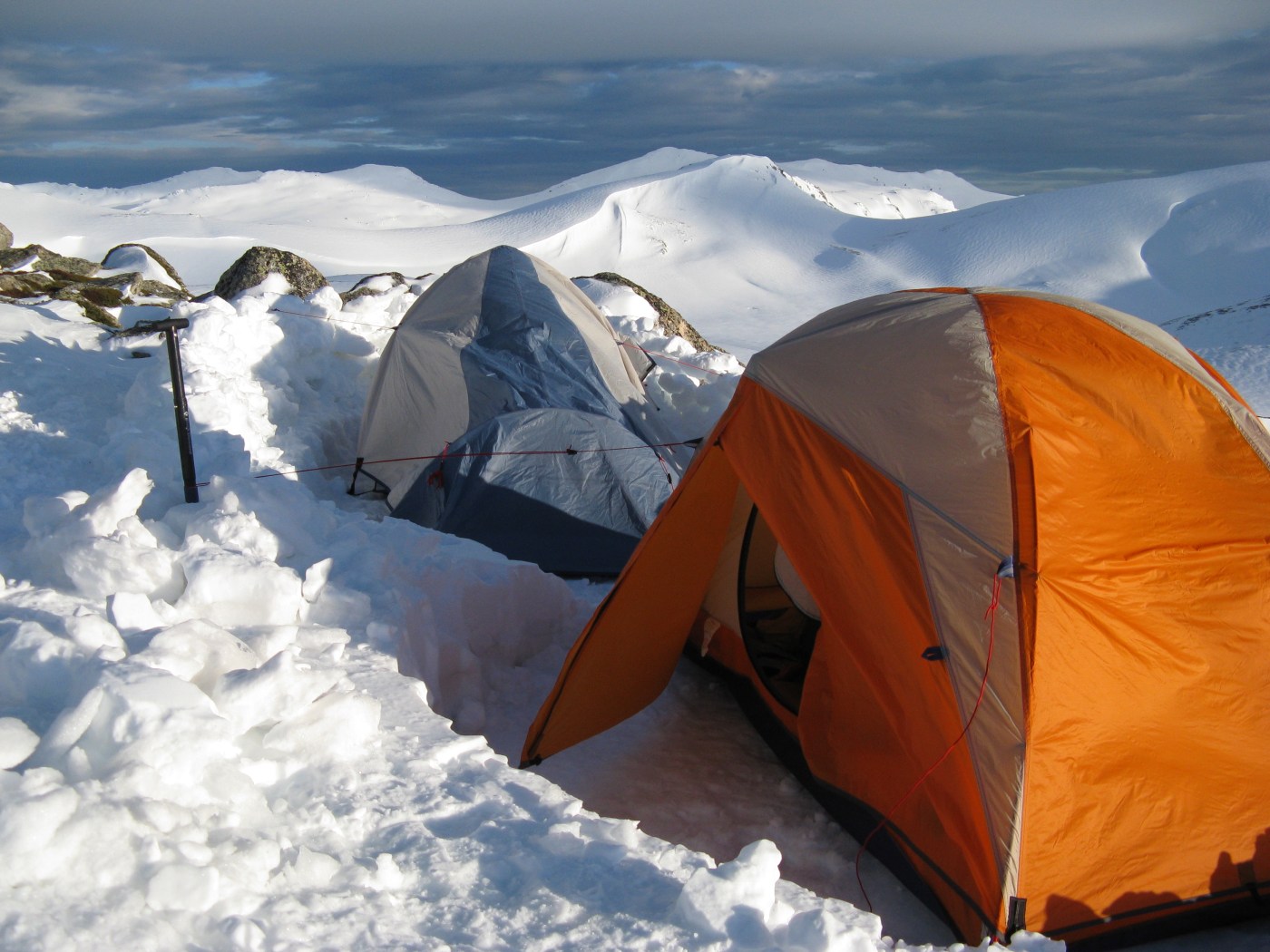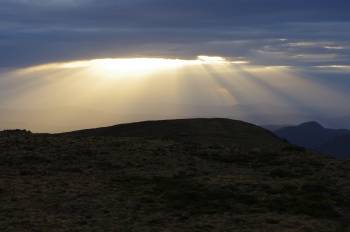The Main Range area of the Snowy Mountains is a small and much loved area with some of Australia’s finest alpine terrain. It is popular with overnight walkers, skiers and riders and while the Parks service prohibits camping within the catchments of the glacial lakes on the range, there are still lots of great spots to stay.
But the problem of human waste is becoming one that backcountry users need to deal with. In places like the Main Range, the time has come to extend the concept of ‘if you carry it in, you can carry it out’. As Andrew Stanger says in this article, “just as dog owners must now collect their pooches poops, it is time for people to do the same when venturing into the great outdoors. People need to bag their poops, take them out and dispose of them appropriately”.
Here’s how you can do it:
Too much Poo in the Hills – Is the Main Range becoming the Sydney beaches of the 70’s?
Last winter as I was organising a cross-country ski tour that included 4 or 5 days on the Main Range I was asked what we would do about our poops. I had really never thought about it being an issue before. On that trip, it suddenly dawned on me what an issue it is!!!
In Sydney, during the 60’s and 70’s, Saturday and Sunday mornings for many people were early morning jaunts down to the beaches for a surf or a swim. Before the majority of Sydney people got up, the keen early risers were up and out there. It was a great way to start the weekend but there was one irky and seriously unhealthly issue to this otherwise healthy wakeup…..poo. Yes the waves and shoreline of Sydney’s beaches were basically awash in sewerage. People were swimming in it and stepping around it on the sand. Oily fetid slicks, condoms, macerated excrement mixed in the foam. Not nice…..But the Waves! The great waves meant we did it. Myth had it that the salt in the water meant it would be ok but it wasn’t and people got sick. It wasn’t nice. It took many years of protest before action was finally taken to stop the dumping of Sydneysiders’ excrement and other stuff into the ocean close to the shore of popular beaches. The remedy wasn’t fantastic, being to simply to dump it further offshore and improve technology at the treatment plants. A sort of out of sight, out of mind solution, but the beaches are now clean…most of the time.
So is the Main Range becoming the Sydney beaches of the 70’s?
Indications are that it is. In what appears to be a pristine environment, people are now cautioned not to the drink water straight from streams. Venturing to the north side of Seamans Hut and other locations in Spring is like a walk through a mine field, each mine marked with the prayer flags of the civilised world. It is a shocking and dangerous experience.
It’s because the number of people visiting the Main Range of Kosciuszko National Park; to walk, ski, board, climb and cross-country ski has increased significantly. In winter more people are camping out there in the snow for longer periods of time, often in the same location. Where do they go to the toilet? Where do they do their number 2’s? There really are no toilets out there. For most people snow camping, it’s behind a rock or in a hole in the snow. Even for day-trippers there are times when natures call catches them out in a beautiful but less than ideal location for doing number 2’s – behind a hut, not so good, within the catchment of a lake or close by a stream, definitely not, on the edge of a track, no way! or in a place where there is no soft ground and delicate plants have only a tenuous grip, get out of here! But when you gotta go, you gotta go!! But where and how?!!!
I found out the solution is pretty simple really.
Just as dog owners must now collect their pooches poops, it is time for people to do the same when venturing into the great outdoors. People need to bag their poops, take them out and dispose of them appropriately.
“Really?!!!”
” Yes REALLY!!!”
“Ok how?”
Researching this subject has revealed a number of relatively simple, tidy ways for people to toilet in the hills and remove it, leaving one with the satisfying feeling of really “leaving no trace”.
How is this done? I asked around and researched articles.
One solution is the wag bag. These are purpose made bags that can be purchased from outdoor shops. Allie Pepper, from Allie Pepper Adventures, is an Australian mountaineer, mountain guide and Outdoor Instructor. In Winter, Allie takes clients on several trips to Blue Lake and other locations on the Main Range of Kosciuszko National Park for 4 days of instruction in basic mountaineering. On her trips all waste must be taken out. Wag bags are the solution in this case. In the freezing world of the Main Range in winter where things go solid, they are relatively simple to use; not so different to the way people bag the dogs doops. They can be used more than once. When done, they are put into a recepticle to be taken out of the mountains where they can be disposed of in an appropriate manner. Do not flush these down the toilet or drop them into a composting toilet. They must be disposed of appropriately. See the wag bag website.
In Australia we have not moved on this problem. For many years in some US National Parks, regulations regarding human waste strictly requires users to take it out, no ifs or buts. Some places have bag stations provided at the start of trails with proper collection stations at known locations. http://www.boulderclimbers.org/what-does-bcc-do/bags/
When you pick up your permit for overnighting in some US parks, the rangers will give you a Wag Bag. You have to take it, you are required to use it and you must dispose of it in collection points.
The NZ Alpine Club recognises the problem of human waste in the mountains. They sell disposable, biodegradable cornstarch bags and poo pots. While I have not used these they seem good. These are used in much the same way as the wag bags. Climbers heading out into the mountains can pick them up from various locations and are strongly encouraged to use them and bring them out.
But one very good, simple, do-it-yourself technique came straight from the NSW Nordic Ski Club archives and current member, Trips Coordinator, Damien Aggio. His solution is the poo tube which he took on the Club, 10 Peaks, four day, cross country ski trip on the Main Range last winter. This technique was taught many years ago by leading members of the Club. I was impressed!
I decided to try this technique, with my own modifications, to see how easy it was. I did this on the Jagungal Reccie, a six day Club trip in January this year .
The answer was; it was easy. It was the most satisfying experience I have had, knowing that I had left no trace for the entire journey; the view, the ground, the creeks, the plants had been left unspoilt. No-one would have ever known I had been there. Carrying and taking it out went without mishap and finally disposing of my waste was not a problem; it was not a terrible ordeal, it went straight into my special compost where it was broken down in a matter of weeks. There were bonuses all round.
The technique I used was based on Damien’s poo tube method which is proven on the Main Range in freezing conditions and snow.
This is it.
Equipment:
- a 10 ltr plastic pail with tight fitting lid…purchased from Mitre 10 Jindabyne. I secured this to the outside of my pack with shock cord
- One, “Fresh” magazine picked up from Woolies in Jindabyne
- toilet paper
- recycled, medium sized snap-lock bags which had been used to package my previous nights dinner
- cornstarch bags
- a 5 litre dry-bag to carry toiletries in, attached to the outside of my pack
Technique:
- detach the 5 litre dry-bag and head for a sheltered spot, preferably with a view
- open the bag and get out 2 double pages of the “fresh” magazine
- stamp down the snow where you intend to go, make a small flat level area
- lay out the two double pages overlapping a bit.
- put snow lumps or small stones on the corners of the paper to stop the paper blowing away
- do your business
- when done wrap/roll the paper to form a snug package
- pop the package into the snap-lock bag
- pop into larger plastic bag and seal up
- stand and admire the view and the fact that nothing was disturbed or left behind
- go back to your pack and pop the bundle in pail
- presto
- repeat
- when back out from my trip I simply emptied the paper package out of snap-lock bag into a special compost bin. A number of articles I have read also advise that the paper package could be put into a composting toilet without causing problems. It could also be buried in a suitable location well away from creeks etc.
- in my case, one month later there was nothing left.
As I said, this was a very satisfying experience, not horrible or disgusting at all. I will certainly be doing this on all of my trips from now on, summer and winter. It is vitally important that we all become responsible and “leave no trace – take it out” when we venture out into those natural environment we love so much to be in. We don’t want these places to be the same as the Sydney beaches of the 70’s. Add a poo kit and pail to your kit. Be satisfied knowing that you left no trace.
Cheers
Andrew Stanger
Some other links you may want to check out:
http://www.alliepepperadventures.com.au
http://www.traditionalmountaineering.org/News_BlueBag_1985.htm
http://kayakcamping.amongstit.com/2010/03/25/the-groover-aka-personal-human-waste-management-system/

























































June 5, 2016 at 1:34 pm
Reblogged this on VK2TWR Snowy Mountains and commented:
Thanks Cam
something we don’t think about enough
very good to get more people thinking about
this problem